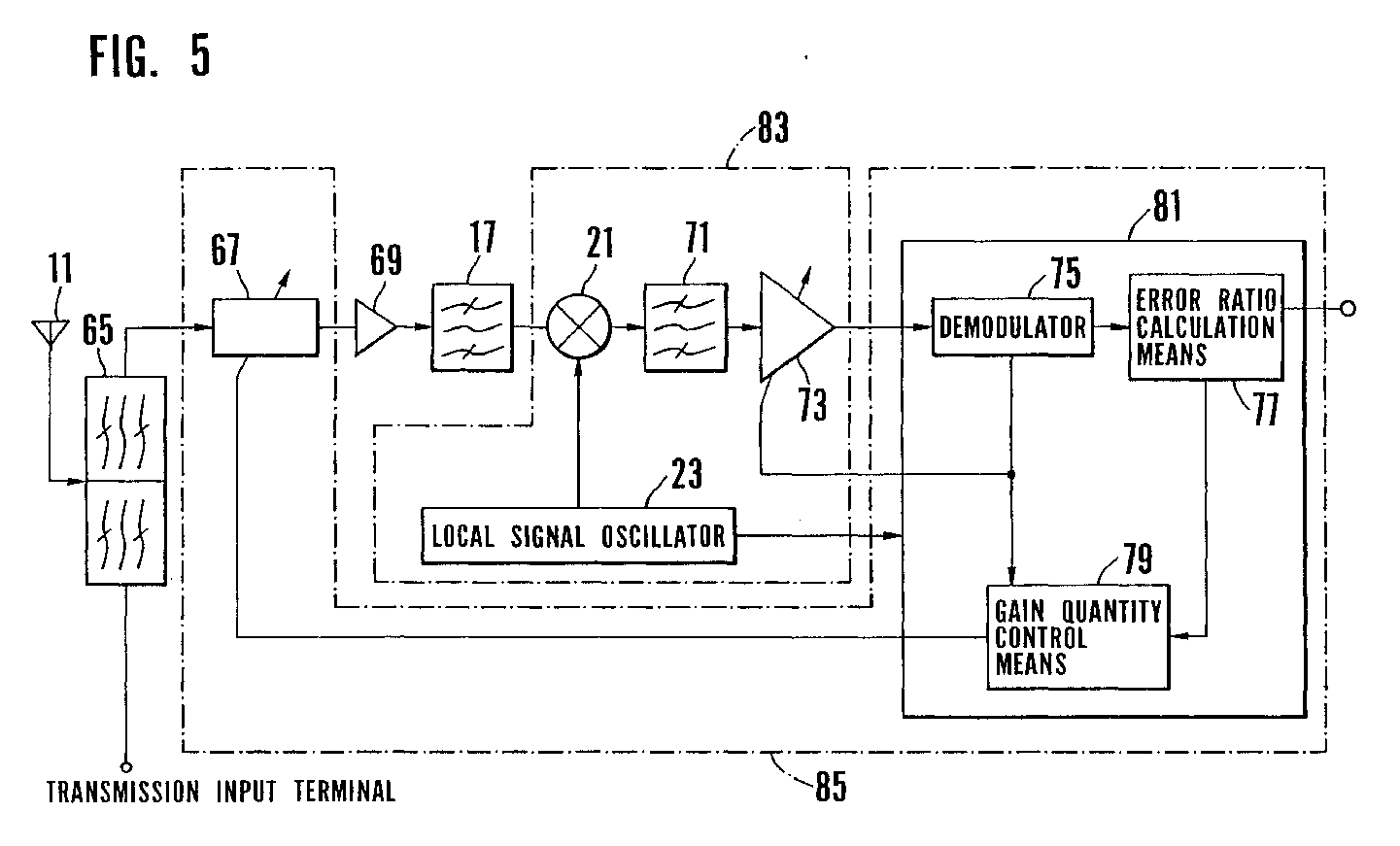(57) In a receiver used in radio communication, when except for a received signal frequency,
two or more interfering waves having different frequencies exist, a deterioration
in the receiving sensitivity resulting from a cross modulation produced by a non-linearity
of a high-frequency amplifier and a frequency converter is minimised. The received
signal from an antenna 11 and an antenna sharer 65 is transmitted via a first variable
gain means 67 with a minimum gain quantity set, amplified, and transmitted via a band
pass filter 17 to a frequency converter 21. At the same time, a local oscillating
signal with a controlled oscillating frequency is also input. These signals are mixed,
and a signal in an intermediate frequency band is output via a band pass filter 71
to a second variable gain means 73 whose gain is controlled, to make constant an input
signal power level of a demodulator 75. A gain control signal of the second variable
gain means 73 is a voltage value as a gain quantity. The control circuit 81 grasps
a gain control quantity based on the voltage value of the control signal, and also
a power value of the received signal from a gain increase/decrease in each block of
the receiver. The signal from the second variable gain means 73 is demodulated by
the demodulator 75, converted to a base band signal, and after AID conversion, fed
to an error ratio calculation means 77. Also a gain value control means 79 controls
the gain value of the first variable gain means 67.
|

|
